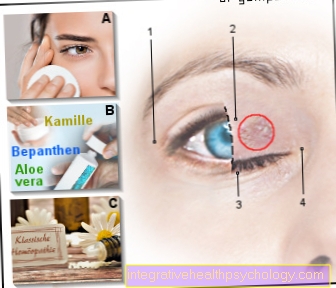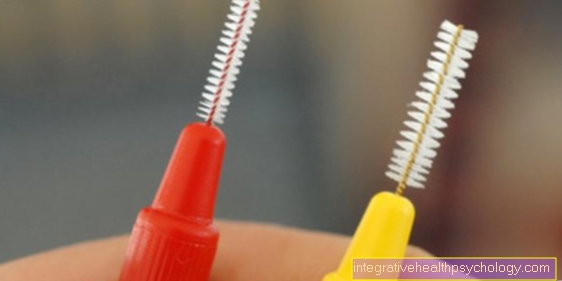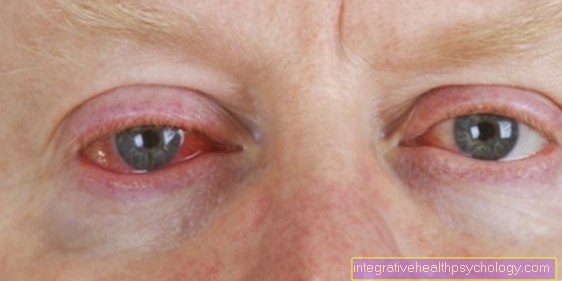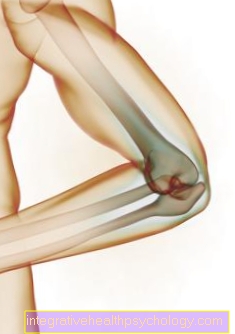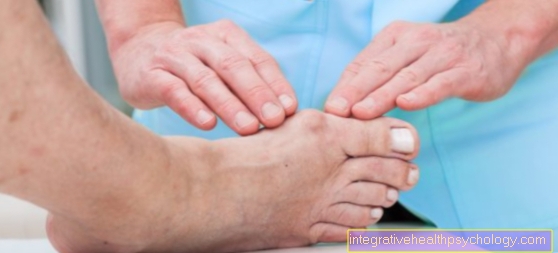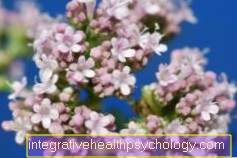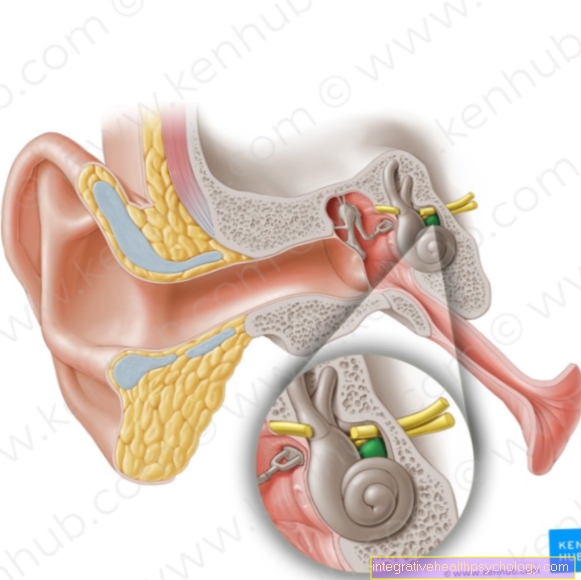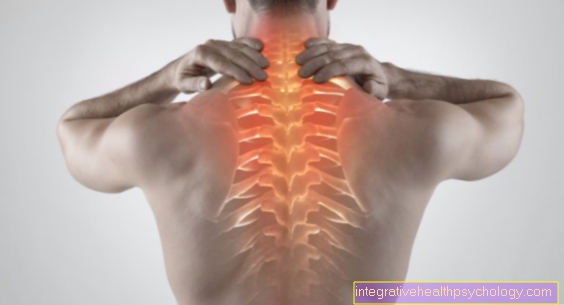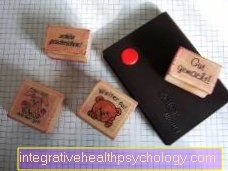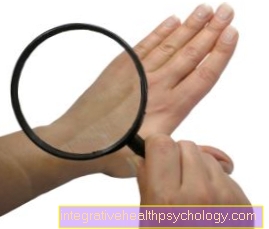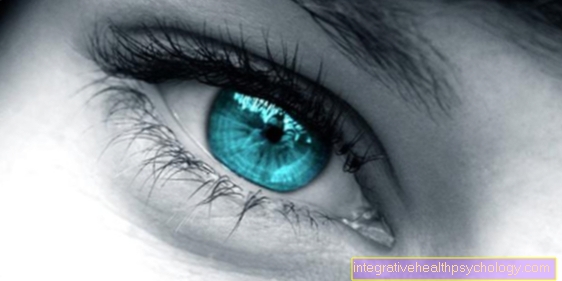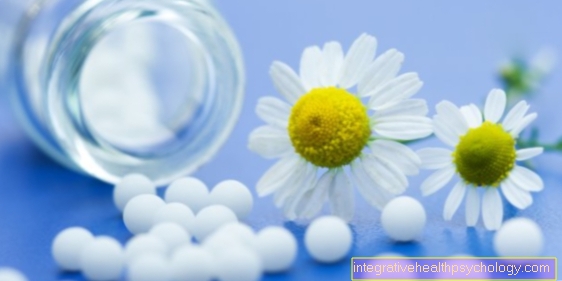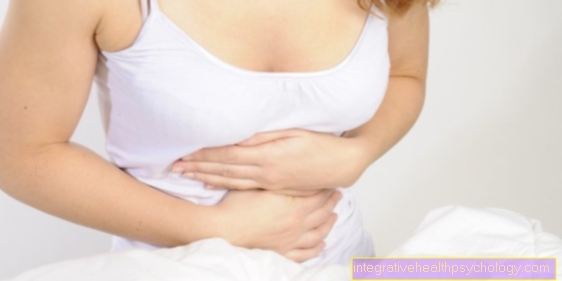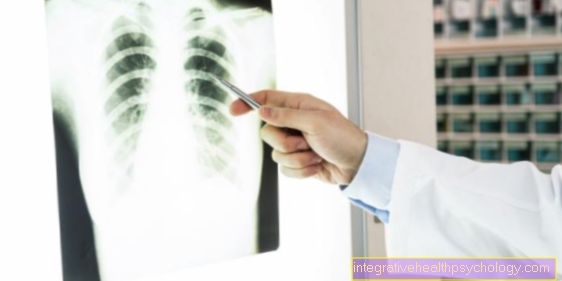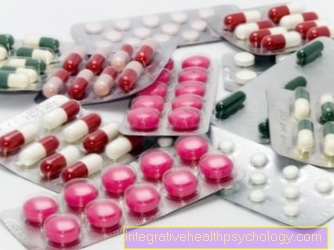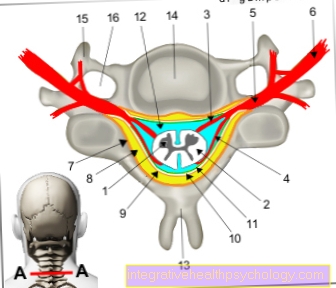Green diarrhea
Diarrhea is a very common condition that everyone experiences at some point in their life. There is no strict definition, but more than three watery bowel movements per day are assumed to result in diarrhea. There are many causes of diarrhea, so the texture, color, and smell are often important for diagnosis. Elderly people and children are at greater risk from diarrhea, as they can suffer from dehydration (desiccosis) more quickly.

Causes of Green Diarrhea
-
Bile Acid Loss Syndrome
-
Consumption of green foods
-
Due to medication
-
Infectious diarrheal diseases
You may also be interested in the following article: Green bowel movements
Loss of bile acid
The bile or bile acid is produced in the liver, stored in the gallbladder and passed into the intestine when food is consumed. The bile is used to digest and absorb fat. Part of the bile is then taken up in the small intestine (ileum) and recycled. The other part is excreted with the stool.
Bile acid loss syndrome can occur if this part of the small intestine is ill or has been surgically removed. When the bile acid gets into the large intestine, watery greenish diarrhea occurs (chologene diarrhea). In extreme cases, fatty stools (steatorrhea) can occur. If such a disease is suspected, a medical consultation is necessary.
Read more on the topic: Fat stool
Consumption of green foods
Diet naturally has an impact on the color of bowel movements. Green raw vegetables, in particular, can turn stool green. This is due to the chlorophyll contained in vegetables. Foods like peas, spinach, broccoli, and lettuce are examples of foods that can cause stool coloration. That shouldn't be a cause for concern, it's not dangerous. If you eat other foods for a few days or cook the vegetables, the color should disappear again. However, these foods shouldn't cause diarrhea.
Also read the article on the topic: Colors of bowel movements
After taking iron tablets
In the case of iron deficiency anemia, iron tablets are often prescribed to counteract the deficiency. These tablets are often not well tolerated and can lead to diarrhea. Actually, you should take the tablets on an empty stomach, but if that is not possible, you can try to take them with meals.
So they are often better tolerated, but less iron is absorbed. Another side effect is stool discoloration. It can turn green to black. This is a normal side effect and is not dangerous.
Read more on the subject at: Black bowel movements
After taking antibiotics
Sometimes antibiotics not only attack the right bacteria, but can also unbalance the intestinal flora. This can lead to diarrhea and discoloration of the stool. The stool can be yellowish to greenish in color. Most of the time, after stopping antibiotic therapy, these symptoms will go away. Probiotics can help normalize the balance of the intestinal flora.
Can green diarrhea be a sign of cancer?
You should be vigilant if there are changes in bowel movements, as these can indicate a possible cancer. Colon cancer can cause both diarrhea and constipation. A greenish discoloration is not a classic symptom. If, however, no further cause can be found or the stool is black or bloody, a medical consultation is necessary.
In general, you should attend the preventive examinations for colon cancer. From the age of 50 you can do an annual stool test and every 10 years you have the opportunity to have a colonoscopy. Anyone who has a first-degree relative with colon cancer should take preventive measures from the age of 40 at the latest!
For more information, see: Colon cancer symptoms
diagnosis
In order to make a diagnosis, a detailed discussion is necessary first. The symptoms and accompanying symptoms must be described, as well as duration, occurrence and previous illnesses. A detailed anamnesis and description of the diarrhea is the first step.
This is followed by a physical exam and possibly a stool exam. This searches for pathogens and you can also check whether there is blood in the stool. A blood test may also be required depending on the symptoms. Finally, ultrasound of the abdomen is also available.
Which symptoms do I use to tell that my green diarrhea is pathological?
Since there are so many causes of green diarrhea, the question arises when it is pathological. The first step is of course to rule out causes. So you should pay attention to whether you have eaten a lot of green raw vegetables recently. If this is not the case, then diet cannot be the cause. If you have been taking antibiotics in the past few weeks, this may be the cause of the diarrhea. Probiotics can help in this case.
But if you have bloody diarrhea, severe pain or fever, you have to consult a doctor. Green diarrhea can also have an infectious cause. Salmonella, for example, is a possible pathogen here. These can be found in contaminated food such as eggs, milk, or poultry. Salmonellosis leads to watery, green diarrhea, which can also be bloody. The person may also experience flu-like symptoms. Most of the time, no therapy is necessary, except for children, the elderly or the immunosuppressed. Overall, you should see a doctor if the diarrhea persists or is accompanied by a fever.
Read more on the topic: Symptoms of diarrhea
Flatulence
It is not uncommon for diarrhea to be accompanied by flatulence (meteorism). Diet can also have a big impact on this. When combining flatulence with green, voluminous and foamy diarrhea, one must think of a parasite infection.
The so-called giardiasis is a common infection that is found mainly in the tropics and subtropics. Symptoms include the above, plus flu-like symptoms, bowel cramps, nausea, and vomiting. If you experience such symptoms after a trip to the tropics, you should see a doctor. Giardiasis can be treated with antibiotics.
This article might also interest you: Intestinal cramps
Green slimy diarrhea
If the diarrhea is slimy or shiny or leaves a greasy film in the toilet water, then it is most likely caused by fatty stools or steatorrhea. Fatty stools can have many causes, in combination with green diarrhea it can be the above mentioned bile acid loss syndrome. Since the bile acids are not reabsorbed, a loss or deficiency occurs.
The fat that should actually be absorbed with the help of the bile acid remains in the intestine. That leads to bulky and greasy stools. This can lead to deficiency symptoms and weight loss and should be treated. If the stool is shiny and pitch black, then it is tarry stool. This can be an indication of intestinal bleeding, so an immediate presentation to the hospital is necessary.
These articles might also interest you: Slimy diarrhea and Slimy bowel movements
Green watery diarrhea
In the case of diarrhea, the stool often cannot get its dark color due to the rapid passage through the intestine. Usually, the bile gives the stool a greenish color, which is turned to a brown color by bacteria in the colon.
If you have diarrhea, the stool doesn't stay in the colon long enough to get this color. This leads to lighter, greenish diarrhea. It is important to find the cause of the diarrhea and to see a doctor if the fever or symptoms persist.
Also read the article on the topic: Causes of diarrhea
Which green diarrhea needs treatment?
Generally speaking, the elderly, young children, and people with poor immune systems are more at risk of developing diarrhea than healthy adults. A harmless diarrhea can require treatment in these patient groups, as they can suffer from dehydration (desiccosis) more quickly. Green diarrhea that only lasts a few days and otherwise causes no symptoms does not necessarily require treatment. Symptomatic therapy with plenty of fluids and light foods is sufficient here.
If you suspect an infectious cause and the diarrhea is very painful, possibly with fever, vomiting or flu-like symptoms, you should see a doctor. Especially if you have previously traveled to the tropics or subtropics. If the diarrhea is greasy and green, you may have bile acid loss syndrome.
Since fatty stools can lead to weight loss and deficiency symptoms, these also require treatment. If you have green diarrhea during antibiotic therapy, you can treat it with probiotics. If the diarrhea persists, turns black, or if there is a high fever, you should see a doctor for clarification.
You might also be interested in this topic: Which diarrhea is contagious?
Green diarrhea in the baby
In the first one to two days after birth, the newborn excretes what is known as the child spit or meconium. This is a sticky greenish-black mass that consists of amniotic fluid, mucus, bile acid and blood and is absolutely normal. It can take up to five days for the baby to clear all of the meconium. The faster the meconium is out of the intestine, the better as it reduces the chance of newborn jaundice.
Read more on the topic: Bad luck
Bottle infants who are fed hypoallergenic food may have green stools, but this is normal. If the baby is breastfed and develops green diarrhea, there may be an infection behind it. As in adults, both viruses and bacteria, such as salmonella, can cause diarrhea. This is often accompanied by fever and a feeling of illness.
Since babies dry out very quickly, you have to be careful with diarrhea. It is best to take the child to the pediatrician. You have to be particularly careful with babies who no longer want to drink. Then you have to see the child immediately. If the baby is already feeding, green vegetables can discolor the stool here too. But that should go away on its own.
For more information, see: Green stool in the baby
Green diarrhea in the child
Both diet and medication can lead to diarrhea in children. Infections with viruses or bacteria can also be the cause of green diarrhea. Especially if it is accompanied by fever, abdominal pain, gas and nausea. One should watch out for possible food intolerances. For example, if the child has diarrhea after consuming dairy or gluten-free products, this could be a lactose or gluten intolerance.
If the diarrhea is persistent or recurring, the child should be presented to the pediatrician. Even if an infection is suspected, therapy is necessary and, above all, sufficient fluid intake must be ensured.
Duration / forecast
In general, diarrheal diseases are very common and not dangerous. Mostly they last for several days. If the diarrhea is caused by medication, it will last for the duration of the therapy, but should go away afterwards.
Read more on the topic: Duration of diarrhea
A diarrheal illness should not last longer than two weeks, from then on one would speak of chronic diarrhea. In the case of black diarrhea (tarry stools), special attention is required as this can indicate bleeding. Infectious diarrhea can be treated symptomatically with fluids and light foods. In some cases, however, antibiotic treatment is necessary.
Recommendations from the editorial team
- Duration of diarrhea
- Diarrhea after alcohol
- Home remedies to treat diarrhea
- Diarrhea at night

